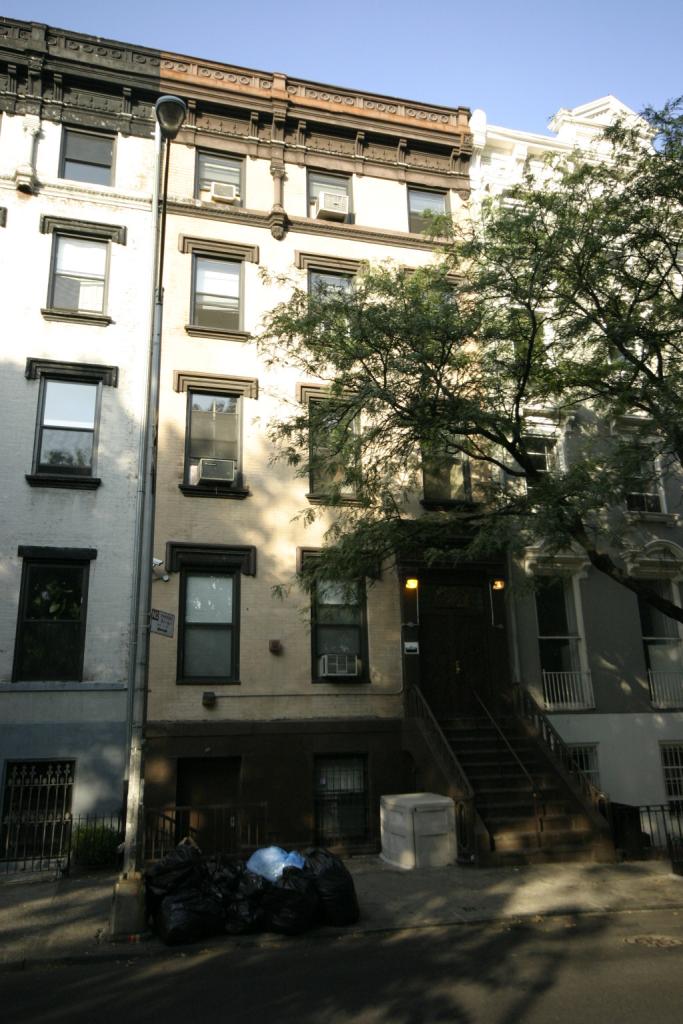BY TERENCE CONFINO | While the Landmarks Preservation Commission, on Tuesday, voted unanimously to designate a block of E. 10th St. as a historic district, the community’s victory is bittersweet since the city already gave developer Ben Shaoul the go-ahead to construct a rooftop addition on one of the historic structures. The building, at 315 E. 10th St., dates back to the late 1840s.
“It’s really an important step forward, but at the same time, we’re taking a step back as well,” said Andrew Berman, executive director of the Greenwich Village Society for Historic Preservation.
In a disputed move, the Department of Buildings issued the permits to Shaoul just prior to the L.P.C. hearing and vote.
A press release issued shortly after the meeting by state Senator Daniel Squadron called D.O.B.’s timing “disturbing,” adding that it “raises serious questions about coordination between city agencies.”
The L.P.C. later termed the rooftop addition “unsympathetic” to the historic district.
Meanwhile, everyone who offered testimony at the hearing spoke in favor of designating the 26 buildings along E. 10th St. between Avenues A and B, on the north side of Tompkins Square Park.
Anthony Donovan has lived in the East Village 21 years. And when it came to voicing his support of the street’s history, his comments stood out from the rest.
“Historic districting cannot be our tool in stopping the violations of uncaring, greedy, often internationally funded corporate landlords,” he said. Donovan asserted that, along with the bank branches that have appeared on almost every corner in the last decade, are real estate management companies that care about one thing only: “getting the maximum profit that can be squeezed out of others, shattering the living history of a local people and their sense of community.”
Squadron, Borough President Scott Stringer and Councilmember Rosie Mendez each sent representatives to read statements for them. Joining them were local preservation groups G.V.S.H.P., Lower East Side Preservation Initiative and Bowery Alliance of Neighbors (BAN).
Squadron’s statement referred to the rapid changes in the Lower East Side and East Village in recent years, “changes that came at the expense of architectural integrity of the area.”
Stringer’s statement concurred on the “tumultuous changes” the area has experienced, adding that “this designated area is remarkably intact despite ever-present threats to redevelop or modify it.”
Mendez’s statement made brief mention of Joseph Trench, the noted architect who introduced the Italianate style to at least five residential buildings on this block of E.10th St.
“While architecturally diverse, the buildings are harmonious in terms of scale, setback, height and materials, with an unquestionably distinct sense of a place that is worthy of the protection and recognition offered by designation as a historic district,” Mendez’s statement said.
G.V.S.H.P. Director Berman told the story of the East Village’s transformation from a mecca for European immigrants to a haven for artists, writers and musicians from across the country and globe.
“That rich heritage is woefully underprotected in terms of landmark status, and as a result in recent years we have seen much of the neighborhood’s historic fabric and character destroyed,” Berman said.
Some of the buildings lost include the circa 1839 Greek-revival row houses at 326 and 328 E. Fourth St.; the circa 1825 Federal-style house at 35 Cooper Square; and the recently demolished 331 E. Sixth St., which was constructed in 1852.
What remains of the historic East Village is a blend of diverse architectural styles, including Greek revival, Neo-Gothic, Italianate and Neo-Grec, according to Jean Standish, vice chairperson of BAN.


















